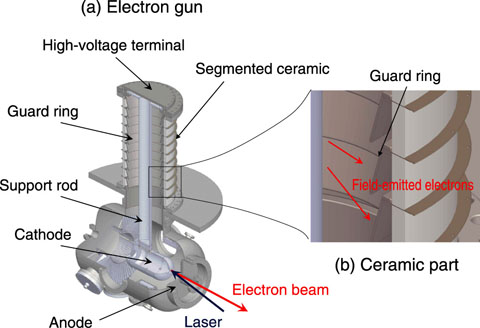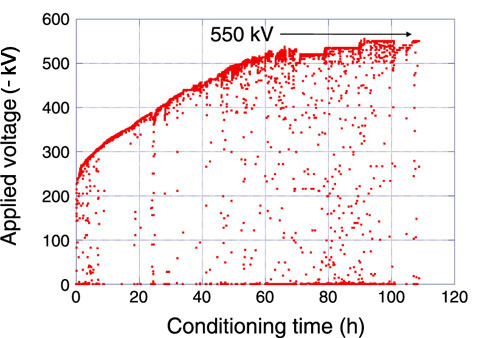
Fig.4-2 Segmented ceramic and guard ring

Fig.4-3 High-voltage conditioning
The realization of a light source that is 103 or more times as strong as the current source (next-generation light source) will make possible the nondestructive analysis of radioactive isotopes, real-time observation of chemical reactions, and high-resolution imaging of living cells. This next-generation light source is based on an electron-beam acceleration technique. Institutions around the world have been actively promoting research and development for this source.
The most important technology for realizing such a light source is beam generation by an electron gun utilizing a photocathode. In order to obtain a strong and bright electron beam, a photocathode and DC high-voltage acceleration techniques are employed in the electron gun. Light from a laser excites the electrons in the photocathode, and it emits the electrons to generate an electron beam. The electron beam is defocused because of the repulsive force of the electrons. A voltage of 500 kV or higher is required to sufficiently reduce this repulsive force. It is not easy to achieve an accelerating voltage of 500 kV with this type of electron gun. Although various developments have been made since 2002, the highest accelerating voltage achieved was 350 kV (Jefferson Lab, USA, in 2005).
In order to obtain a strong and bright electron beam by using a photocathode electron gun, it is necessary to shorten the distance between the cathode and the anode. Therefore, a support rod has to be placed at the center of the ceramic tube (Fig.4-2 (a)). However, when the accelerating voltage was 500 kV or higher, this structure resulted in the ceramic tube getting damaged by electric discharge from the support rod. We employed a segmented ceramic structure and a guard ring (Fig.4-2 (b)) to prevent any damage to the insulator from electrons emitted by the support rod and optimized the shapes of this structure.
We carried out a high-voltage testing of the 500-kV DC photocathode electron gun developed for next-generation light sources. The electron gun was successfully conditioned up to a voltage of 550 kV (Fig.4-3) and a long-time holding test for 8 h was demonstrated at an acceleration voltage of 500 kV.